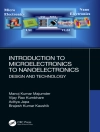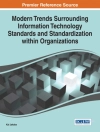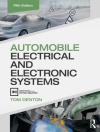This research text presents the synthesis, characterisation, and advanced technological applications of novel nanocarbons, with a focus on graphane, graphyne, graphdiyne, graphene nanoribbon, onion like carbons and carbon nanotori. The book covers the various applications of novel nanocarbons, such as in solar cells and flexible electronics, provides updates on the effects of doping and electronic properties of electrode materials based on novel nanocarbons, and references further research and application-oriented innovations using these new carbon nanostructures. It also provides new updates on the effect of doping and structural twist on the electrochemical performance of electrode materials based on novel nanocarbons. This book will appeal to researchers and graduate students working with novel nanocarbon allotropes, including disciplines such as physics, chemistry, materials science, and chemical engineering.
Key Features
- Presents the synthesis, characterisation, and advanced technological applications of novel nanocarbons
- Focuses on graphane, graphyne, graphdiyne, graphene nanoribbon, onion like carbons and carbon nanotori
- Covers the applications of novel nanocarbons in solar cells, flexible electronics, supercapacitor batteries and next-generation energy storage devices
- Includes cutting-edge research on new carbon nanomaterials (2D nanosystems) challenging graphene
- Covers the effect of doping and electronic properties of nanocarbons for quantum devices
- Discusses the commercialisation, shortcomings and future prospects of nanocarbons
Содержание
1 Recent advances in nanocarbons: status and prospect
2 Synthesis and application of graphene nanoribbons
3 Synthesis and application of hetero-atom doped graphene nanoribbons
4 Synthesis and application of graphene nanowires
5 Synthesis and applications of graphane
6 Synthesis and applications of graphyne
7 Synthesis and applications of graphdiyne
8 Synthesis and application of onion-like carbons
9 Synthesis and application of carbon nanotori
10 Nanocarbons: commercialization, shortcomings, and future prospects
Об авторе
Dr. Arpan Kumar Nayak is an Research Professor at Konkuk University, Seoul, South Korea. His research mainly focuses on the synthesis of various nanostructured materials towards environment and energy applications. He has published more than 60 articles in various international journals (h-index 23, i-index 38), four books, and is the editor-in-chief of the International Research Journal of Multidisciplinary Technovation and Bulletin of Scientific Research.
Dr. Santosh K. Tiwari is an Assistant Professor at NMAMIT, Nitte, India (Guangxi Institute Fullerene Technology, GU, Nanning, China). He received a Ph D in 2D materials-based polymer nanocomposites from IIT Dhanbad, India. He then worked for over five years with several highly ranked research labs and universities around the globe, including HSCL, Hanynag University in Seoul, Korea, GIFT, GU in Nanning, China, and the University of Warsaw in Poland. He has published more than 60 articles (h-index 24) and five books with reputed international publishers. His research interests are in the areas of new materials, 2D nanomaterials, polymer composites and mechanical properties.












